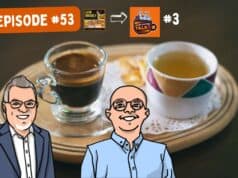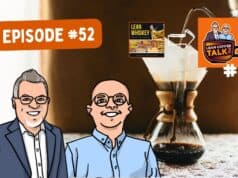The reason Andy Carlino and I named our book The Hitchhiker's Guide to Lean: Lessons from the Road is that we felt that not only was a company to go on a lean journey that never ends, but also the individual. As two individuals, we feel we learn lessons at every corner, with every barrier and through every conversation. One only has to be open to the experience, look for the opportunities to learn and reflect deeply enough to integrate those lessons. This is why some gain a great deal of knowledge from an experience such as benchmarking or a conference and others gain very little. One such experience was the Industry Week Best Plants Conference. This is a great concept – a place to honor those who have excelled with the intent to learn from them and others. I was honored to be asked to speak. My topic was on everyday lean, meaning how do we build a culture to get lean into everybody, everywhere, everyday. There was an incredible response to this topic – we had every seat filled, the back and sides of the room, and people standing several deep in the hallway. I know companies struggle with this, which is why I choose it as a topic, but it was clear based on both the attendance and the conversations surrounding it, that many people and organizations now recognize this as a primary concern.
The solution to this is obviously much deeper and broader than can be covered in a blog post. However, we need to move beyond what I call “event lean” with a focus on kaizen events, value stream mapping events, 5S events, training events and so on. These are great tools but they are only tools. Instead we need daily continuous improvement, value stream thinking, a culture of standardization and coaching. One such process that most people think of as an alert system is andon. It can be a tool to improve quality, but I believe it is more than that. I believe it is a process to connect people together for direct observation and mutual learning. Without that intent, you will not achieve the potential impact. I focused on this topic in my latest column for Assembly Magazine, titled Forging Your Help Chain. This excerpt addresses a key aspect of the help chain:
In fact, one of the toughest questions for organizations to answer is when help should arrive. If the problem will prevent the flow of work, it clearly requires immediate help. Other problems might not require immediate attention, but a strong case can be made that help should arrive immediately regardless. The helper is most effective when the current situation is deeply understood, and this insight is best achieved through observation of the problem while it is occurring. If the response from your help chain is not immediate, the possibility of direct observation is lost and with it, the best chance of analyzing the problem and identifying the cause. A lean company will eliminate barriers that prevent people from responding to the right place at the right time to observe the problem.
Continuing on the topic of building a culture of lean for daily improvement, a wonderful example of the kind of leadership that it requires is Taiichi Ohno, the founder of the Toyota Production System. The best and most useful of his writings, titled Workplace Management, is now available again, thanks to the translation efforts of Jon Miller of Gemba Research. I highly recommend this read which, while quite dated, gives insight into what a few days in a factory with Ohno would really be like. You can check out Workplace Management by Taiichi Ohno here.
While leadership and culture remain the primary barriers to overcome for a successful lean journey, there are also many other barriers that remain that continue to be uncovered and broken through. One such barrier is the role that information systems and IT departments play in the lean journey. While many books have focused on the departments and roles of accounting, there has been little exploration and direction on how to handle the role of IT. A new book titled Easier, Simpler, Faster does exactly that. It is written by Jean Cunningham, co-author of Real Numbers, and Duane Jones, head of IT for Lantech. You can find Easier, Simpler, Faster: Systems Strategy for Lean IT here. For more books, check out The Lean Library.
The lean journey continues, and the battlefront is your organization. We have just as many barriers ahead of us as the barriers we have broken through already. We have to continue our journey together, one yard and one inch at a time. But the journey is worth every ounce of energy, effort, action and reflection that we all continue to pour into it. Best wishes for a successful journey.
Please scroll down (or click) to post a comment. Connect with me on LinkedIn.
Let’s work together to build a culture of continuous improvement and psychological safety. If you're a leader looking to create lasting change—not just projects—I help organizations:
- Engage people at all levels in sustainable improvement
- Shift from fear of mistakes to learning from them
- Apply Lean thinking in practical, people-centered ways
Interested in coaching or a keynote talk? Let’s start a conversation.









![When Was the Last Time a Leader Around You Admitted They Were Wrong? [Poll]](https://www.leanblog.org/wp-content/uploads/2025/07/Lean-Blog-Post-Cover-Image-2025-07-01T212509.843-100x75.jpg)
[…] The wanderings of a lean hitchhiker […]